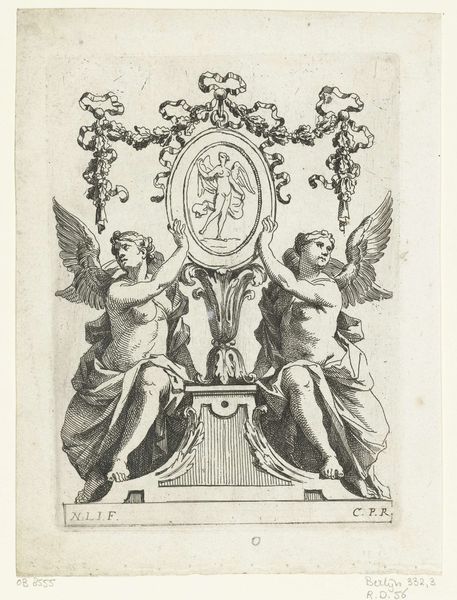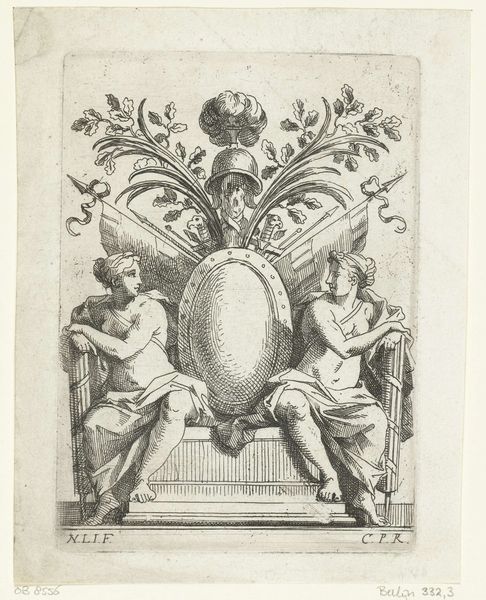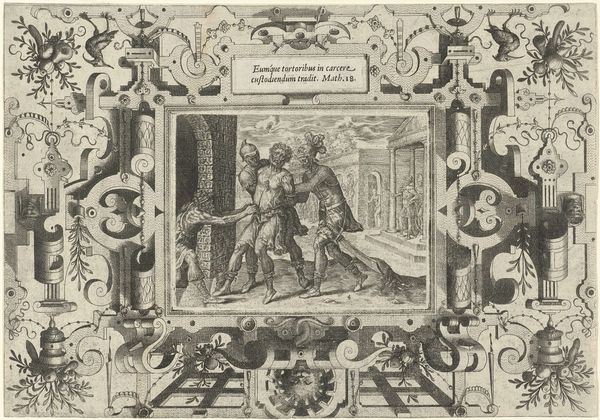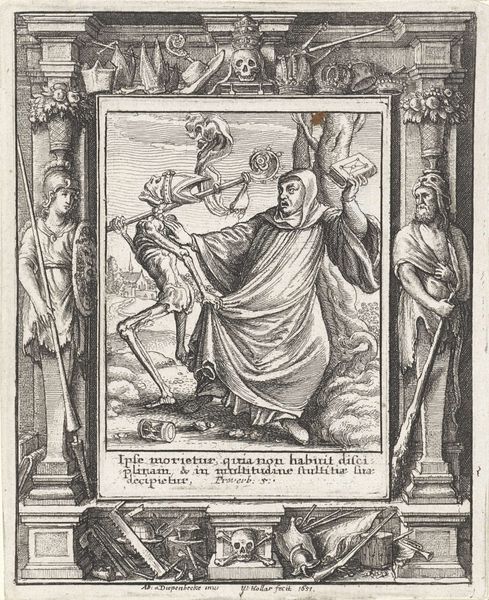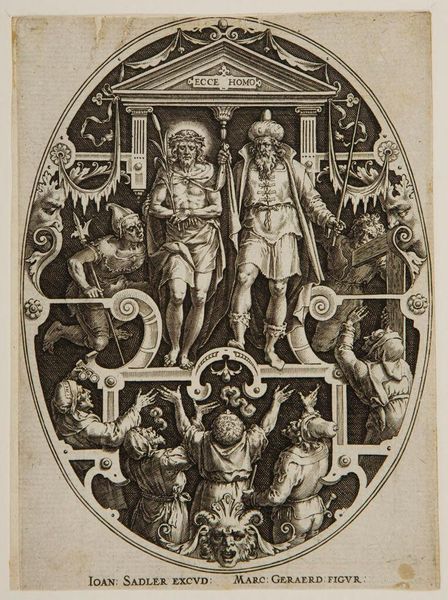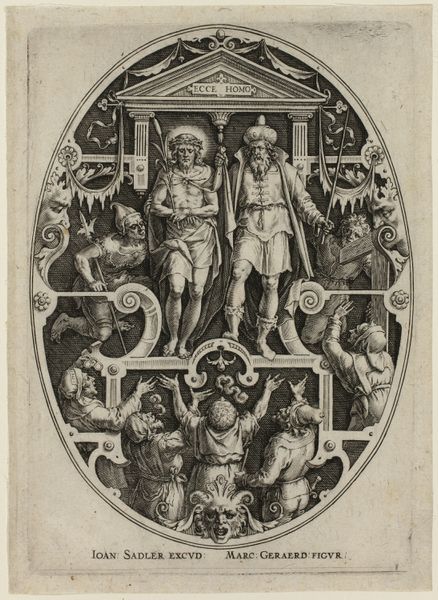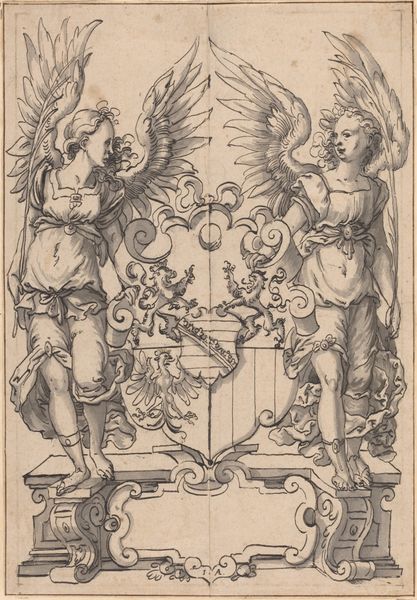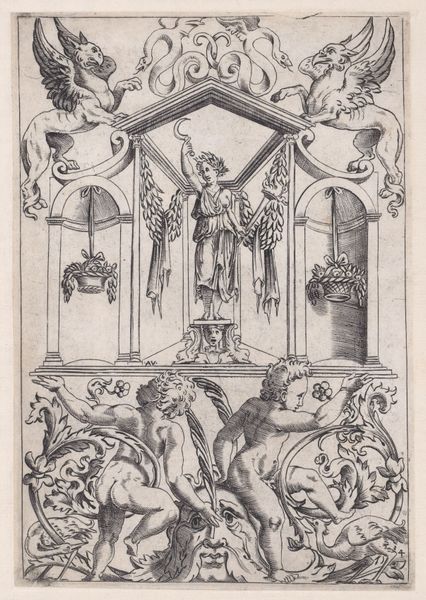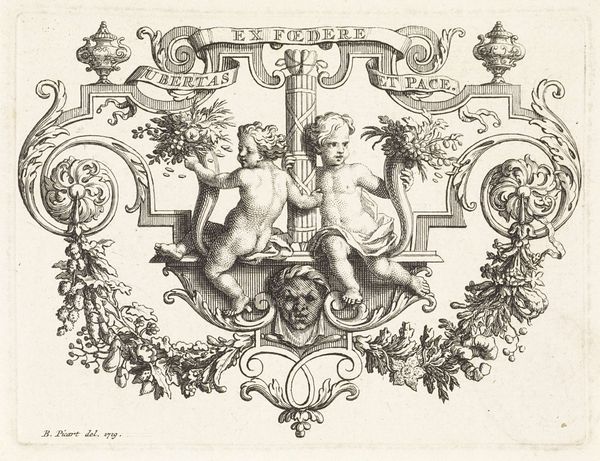
Copyright: CC0 1.0
Curator: Here we have an anonymous artwork titled "Coat-of-Arms of Abbaye Royale, St. Ouen à Rouen," currently residing in the Harvard Art Museums. Editor: It feels burdened by its own grandeur, doesn’t it? The angels seem weary, holding up these heavy symbols. Curator: Structurally, observe the heraldic composition—the shield, the fleur-de-lis, the mitre—all meticulously rendered to convey power and authority. Editor: I see the Abbaye Royale projecting power through the symbols of faith and royalty, reinforcing its dominance within a hierarchical society. What did “His domus stat aeterna” mean in the social context? Curator: The phrase, a Latin inscription, translates to "This house shall stand eternal," emphasizing the abbey's perceived permanence and divine sanction. Editor: Well, it is a reminder of how institutions like the Abbaye Royale sought to legitimize their place within a system steeped in inequality. Curator: Perhaps, but the delicate lines and balanced symmetry also speak to an aesthetic pursuit of harmony and order. Editor: Right, and it's important to remember the abbey's reach was built on exploiting societal structures. Let’s not overlook that context. Curator: Indeed, it's a visually complex piece offering a glimpse into the historical forces at play. Editor: I agree. It's a potent reminder to analyze not just what we see, but what’s left unseen or deliberately obscured.
Comments
No comments
Be the first to comment and join the conversation on the ultimate creative platform.

